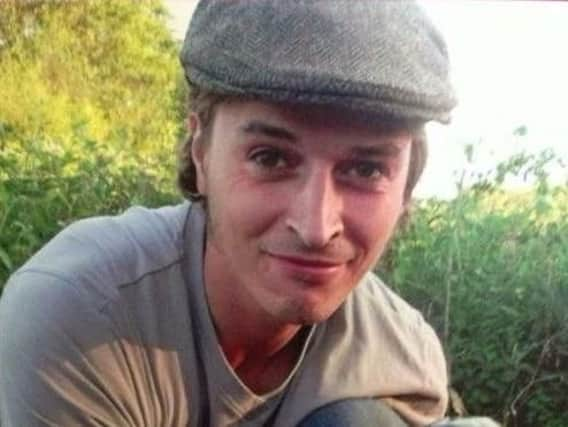Duncan Tomlin inquest - here are the full remarks from the jury


Duncan Tomlin was 32 when he died after being arrested by officers in Haywards Heath in July 2014.
The full remarks from the jury have now been released by West Sussex County Council.
Advertisement
Hide AdAdvertisement
Hide AdYesterday the jury concluded: "Duncan Tomlin died July 29, 2014 at Princess Royal Hospital, Haywards Heath due to cardiac arrest, following the use of a combination of drugs together with police prone restraint.
"On the evening of July 26, 2014, following the use of a combination of drugs mixed with alcohol, Duncan's behaviour became irrational and erratic although at that point he remained coherent. The loud and aggressive nature of the disturbance at Ryecroft, Haywards Heath, led to a call from a neighbour to the police believing there was a domestic assault in progress.
"Upon the arrival of the police, Duncan ran away and was pursued into Wood Ride, where he was detained in the prone position, and captor spray was used.
"He continued to resist and struggle, and so the restraint escalated to the use of handcuffs and leg restraints. Additional officers arrived along with a police van.
Advertisement
Hide AdAdvertisement
Hide Ad"There was no clear continuity of the sharing of information relating to the risk assessment of Duncan's care as different police offices exchanged positions within the restraint, and it was unclear who was in charge in this fast-moving situation.
"During this period of restraint, prior to and after the arrival of other officers Duncan was resisting and making loud, albeit incoherent noises and so the police drew the conclusion he could still breathe.
"Duncan was removed to the van, still in the prone position, including folding his legs back to allow the doors of the van to close.
"There was an insufficient sense of urgency to move Duncan onto his side to address the risks of positional asphyxia from prone restraint couple with the use of handcuffs, limb restraints, the effects of Captor spray and the suspicion that Duncan had taken stimulant drugs.
"Duncan should have been moved onto his side earlier.
Advertisement
Hide AdAdvertisement
Hide Ad"Following a kick, Duncan continued to be restrained in the prone position in the van. A short period of time later, concerns were raised about Duncan's condition.
"The handcuffs and leg restraints were not removed at this point.
"He became unresponsive and a call was made for an ambulance, but due to a shortage of available SECAMB resources, the nearest available help was too far away so the decision was made to take him straight to the hospital.
"Duncan had a pulse but his breathing was laboured. At the point when the officers could no longer find a pulse the decision was made to take Duncan out of the van to commence CPR.
Advertisement
Hide AdAdvertisement
Hide Ad"Officers were immediately dispatched to collect a defibrillator from the police station and to fetch a doctor from PRH.
"A return of circulation was gained following approximately 30 mins of CPR, first by police officers until paramedics and a doctor arrived. Duncan was stabilised and was taken to hospital where he received intensive treatment but following multiple organ failure, he died at 03.59 on July 29, 2014.
"Although the police receive training in positional asphyxia and the available policies extensively cover it, the efficacy of this training is inadequate.."
"The death was contributed to by neglect."